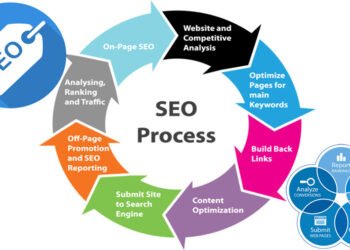Lead conversion touch attribution is a dynamic, multi-touch attribution strategy that assigns the majority of the credit for a conversion to the most impactful exchanges between your brand and a consumer. The model illuminates the path your customers take while empowering you to allocate your marketing resources to the most effective channels, ultimately improving your return on ad spend (ROAS) and reducing waste.
With all of that in mind, we invite you to join us below as we provide actionable tips to help you implement and leverage the lead conversion touch attribution model.
Why Use the Lead Conversion Touch Attribution Model?
At its core, the lead conversion touch attribution model recognizes that the consumer journey involves multiple interactions with a brand. Customers will rarely, if ever, see an ad and race to a website to make a purchase; instead, they will likely interact with the brand several times before they buy a product or sign up for their service.
The lead conversion touch attribution model identifies all of these various interactions and then assigns them credit based on their importance to the point of conversion. The model is not limited by broad rules and instead offers dynamic insights into the key channels and touchpoints along the customer journey.
6 Tips for Implementing the Lead Conversion Touch Model
As you prepare to implement the lead conversion touch model, you’ll need to accomplish the following:
1. Understand the Multi-Touch Approach
Single-touch models, like first-touch and last-touch attribution, assign 100% of the credit for a conversion to one particular touchpoint; conversely, multi-touch models distribute conversion credit to several different interactions at once.
The most simplistic multi-touch model will divide credit equally among all touchpoints — if there were five touchpoints, each would receive 20% of the credit — but the lead conversion touch model takes things a step further than that, assigning varying degrees of credit based on the importance of each exchange.
2. Leverage Technology for Deeper Insights
Once you’ve familiarized yourself with the basics of a multi-touch model, it’s time to upgrade your tech. You’ll need powerful analytics technology to track multiple touchpoints across different channels and aggregate data from various sources; that, in turn, provides a unified view of the customer journey and promotes more accurate attribution.
3. Prioritize Data Integration
For any multi-touch attribution model to work, you must integrate data across all of your marketing and sales platforms. Some common examples include your social media pages, website, connected TV (CTV) ads, and paid search campaigns. When all of your data is integrated, you’ll be able to paint a complete picture of the customer conversion journey.
On the subject of integration, make sure to prioritize platforms that offer built-in analytics capabilities and reporting features as you search for an integration solution. These functionalities visualize your data, making it more digestible and accessible.
4. Test and Optimize
The digital marketing landscape is ever-evolving, which means the behaviors of your customers are, too. As such, regularly testing and refining your attribution models is crucial for staying aligned with these changes; it’s an iterative process that allows you to adapt your strategies in real time, optimizing for touchpoints that deliver the highest ROI.
On that note, try not to get locked into a specific credit distribution approach. The lead conversion touch model is meant to be dynamic; if a particular channel becomes more important to the conversion journey, you can adjust your credit distribution accordingly.
5. Educate Your Team
Ensuring that your marketing team understands the principles and practices of lead conversion touch attribution is essential, as a well-informed team can make strategic decisions about content creation, campaign execution, and channel selection that are in line with your attribution insights.
If you are investing in new analytics and reporting tools, ensure your team knows how to use them, and when choosing new tools, get your team members involved in the selection process. Having them involved early helps increase team buy-in and reduce friction during the transition.
6. Embrace the Power of AI and Machine Learning
Artificial intelligence and machine learning technologies offer unprecedented capabilities in processing vast datasets to identify patterns and predict outcomes. You can also take advantage of the two of them to automate key attribution processes and reduce the burden on your team.
The Path Forward
If your conversion journey is complex, and you currently use multiple marketing channels to acquire and nurture leads, it’s time to adopt a more robust attribution model. The lead conversion touch attribution model can take your digital marketing strategy to the next level, providing you with actionable insights into each touchpoint while highlighting the interactions that play the biggest role in consumers’ decision-making process.
As you take the next step in conversion attribution, support your journey with powerful analytics tools and reporting software. By taking a multifaceted approach, you’ll maximize the impact of marketing investments and deliver a journey that is both engaging and rewarding.












